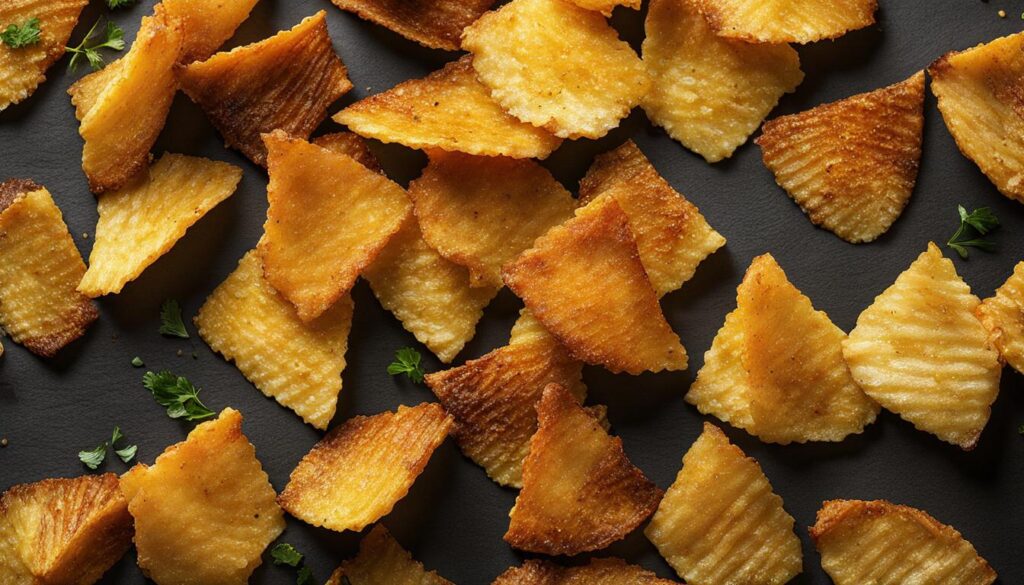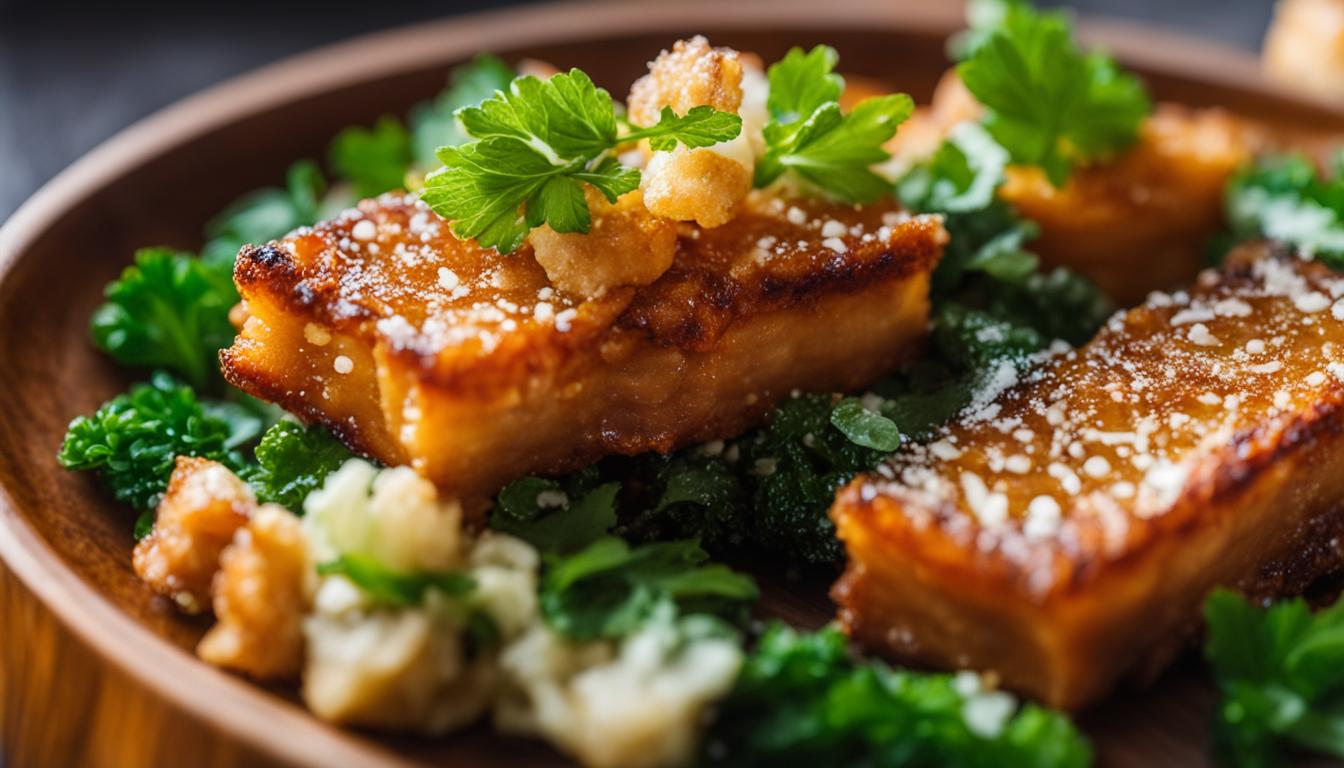Welcome to our Chicharrones Guide! Have you ever wondered how to make chicharrones at home, especially using the “nasty bits” or pork belly? Well, look no further. In this guide, we will show you a step-by-step process to create delicious homemade chicharrones that will make your taste buds dance with joy.
Forget those store-bought versions; we’re going to teach you how to make chicharrones with the perfect amount of crispiness and flavor. So, are you ready to dive into the world of crunchy pork cracklings and crispy pork skin? Let’s get started!
The Traditional Colombian Method
In Colombia, making chicharrones is a culinary art passed down through generations. The traditional Colombian method involves a slow cooking process that results in perfectly crispy pork skin, tender meat, and flavorful fat. To achieve this, we start by rendering the fat from pork belly over low heat. This slow cooking method allows the fat to slowly melt, infusing the meat with rich flavors and creating the perfect environment for achieving crispy skin.
Once the fat has been rendered, it is used to fry the pork belly. This ensures that the chicharrones are cooked in their own flavorful fat, eliminating the need for additional oil. The pork belly is carefully fried until the skin becomes beautifully golden and crispy, while the meat inside remains tender and juicy.
The slow cooking method used in traditional Colombian chicharrones requires patience and attention to detail. It’s important to maintain a low heat throughout the process to ensure that the fat renders properly without burning. This slow and careful approach guarantees a successful outcome, delivering chicharrones with a perfect balance of crispy skin, tender meat, and flavorful fat.
The traditional Colombian method is a labor of love that results in chicharrones that are highly regarded for their exceptional taste and texture. The combination of slow cooking and frying in rendered fat creates an irresistible dish that is both crispy and succulent. It truly showcases the artistry and expertise of Colombian cuisine.
To see the mouthwatering results of the traditional Colombian method, take a look at the image below:
Testing Other Approaches
In our quest to find a cleaner and safer way to make chicharrones, we tested alternative cooking methods. One method we tried was poaching the pork belly before frying it to reduce oil splatter. While this technique initially seemed promising, it did not produce the same level of crispiness and flavor as the traditional approach.
Another technique we explored was using cornstarch to reduce oil splatter during frying. The idea was that the cornstarch would create a barrier between the oil and the pork skin, minimizing splatter. However, this method also fell short in terms of achieving the desired crispy texture and rich flavor.
We found that the traditional Colombian method, although messy and prone to oil splatter, yielded the best results. It produced chicharrones with the perfect combination of crispy skin, tender meat, and flavorful fat. The slow heating and frying process allowed the pork belly to render its own fat, resulting in a superior taste and texture.
While it’s understandable that you may be looking for alternative methods to avoid the mess and potential hazards of frying, we recommend sticking with the traditional approach for the best chicharrones experience. However, if you do choose to experiment with alternative methods, we suggest using a splatter guard and wearing protective clothing to minimize the risk of burns and maintain a clean cooking environment.
The Baking Soda Trick
The use of baking soda in preparing chicharrones can greatly enhance the crisping and browning of the pork skin. When using baking soda, it helps intensify the Maillard browning reactions, dehydrates the skin for faster crisping, and aids in the breakdown of the skin’s proteins. This simple trick can make a significant difference in the texture and flavor of your chicharrones.
To enhance browning and crispness, start by preparing your pork belly as usual. Then, rub the pork belly with baking soda, making sure to coat it evenly. The baking soda will react with the moisture on the skin’s surface, helping to dehydrate it and promote a crispy texture.
After rubbing with baking soda, it is recommended to let the pork belly rest in the fridge overnight. This allows the baking soda to fully penetrate the skin and continue its work. During this time, the pork skin will become even drier, resulting in a crisper final product.
On the next day, you can proceed with the cooking process, whether it involves deep-frying or using alternative methods. The crisping pork skin will be ready to develop a beautiful golden color and remain delightfully crunchy.
We cannot stress enough the importance of following safety precautions when handling hot oil and frying chicharrones. Always use caution and appropriate protective gear to avoid any accidents.
In the following section, we will explore the cooking timeline, from slow-rendering the fat to achieving the perfect crispy and flavorful chicharrones.
Stay tuned for the next part of our guide, where we will cover the slow-cooking process involved in making chicharrones. Get ready to indulge in this mouthwatering snack!
Chicharrones: A Leisurely Cooking Process
Making chicharrones can be a leisurely and enjoyable cooking process. Whether you choose to make them using the traditional Colombian method or explore other variations, the key to perfecting this crispy snack lies in patience, attention to detail, and embracing the experience. Slow-cooking chicharrones allows the flavors to develop slowly, resulting in a rich and satisfying taste.
For those who enjoy the fun of outdoor cooking, consider pairing chicharrones with another culinary adventure, like roasting a whole pig over a spit. The aromas converge, enticing your senses as you indulge in the smoky succulence of slow-cooked meat and the mouthwatering delight of deep-fried chicharrones. It’s a feast for both the eyes and the taste buds.
Deep-frying chicharrones in lard adds another layer of indulgence to the process. As they sizzle and crackle in the hot oil, the chicharrones transform into golden bites of crispy perfection. The slow-cooked pork belly renders its rich fat, infusing each piece with exceptional flavor. The resulting texture is irresistible, crisp yet tender, making every bite a truly satisfying experience.
So, gather your ingredients, anoint your apron, and prepare for a leisurely afternoon of slow-cooking chicharrones. Embrace the art of deep-frying and indulge in the satisfaction of creating these crispy delights from scratch. Enjoy the entire cooking process, from the anticipation of crackling skin to the triumphant moment of sharing your homemade chicharrones.
Chicharrones as Versatile Ingredients
Chicharrones are not limited to being a standalone snack but can also be used as versatile ingredients in various dishes. Incorporating cracklings into different recipes opens up a world of creative culinary possibilities. Let’s explore a few delicious ways to use chicharrones in your cooking:
Chicharron Sopes
Chicharron sopes are an ingenious creation that combines the crunch of a corn patty with the softness of simmered chicharrones, savory sauce, and other delicious toppings. These mouthwatering Mexican delights are perfect for parties, gatherings, or simply indulging in a flavorful snack.
Enhancing Your Recipes
- Add some chicharrones to your tortillas for a delightful crunch in your tacos or burritos.
- Incorporate cracklings in your rice and beans to add a savory and crispy element.
- Sprinkle some chicharrones over your salads to give them a unique texture and an extra burst of flavor.
- Make your scrambled eggs more exciting by adding crushed chicharrones for a crunchy twist.
Don’t be afraid to get creative and experiment with different dishes. The possibilities are endless when it comes to incorporating chicharrones into your cooking. Whether you’re looking to add a crispy and flavorful element to your favorite recipes or create new culinary masterpieces, chicharrones can take your dishes to new heights.
So, grab a bag of chicharrones, put on your chef’s hat, and let your imagination run wild in the kitchen! Your taste buds will thank you for the delicious adventure.
Fish Skin Chicharrones: A Delicious Twist
If you’re looking for a delicious twist on traditional chicharrones, consider making fish skin chips. They offer a lighter and briny alternative to pork rinds, with a crispy texture that is equally addictive.
The process of making fish skin chips is similar to that of pork chicharrones, using the skin of various fish species. The skins are boiled, cleaned, dried, and then fried to perfection. The resulting fish skin chips are incredibly flavorful and can be seasoned with different spices and seasonings. Give them a try for a unique and satisfying snack experience.

Why Choose Fish Skin Chips?
- Healthier Alternative: Fish skin chips provide a lighter and potentially healthier alternative to traditional pork rinds.
- Crispy Snack: The frying process creates a satisfyingly crispy texture that is reminiscent of traditional chicharrones.
- Variety of Fish Skins: You can choose from a variety of fish species to create different flavors and textures.
- Creative Seasoning Options: Season your fish skin chips with different spices and seasonings to personalize the flavor profile.
- Unique Flavor Profile: Fish skin chips offer a briny and seafood-like taste, adding a unique twist to your snacking experience.
Whether you’re looking for a healthier alternative to pork rinds or simply want to experiment with new flavors, fish skin chips are a delightful option. Their crispy texture, diverse seasoning possibilities, and unique flavor profile make them a standout snack. Try making your own fish skin chips today and discover the delicious twist they bring to the world of chicharrones.
Wrap Up and Final Tips
Making chicharrones is a rewarding culinary endeavor that requires some practice and attention to detail. To ensure your safety, it is essential to take certain precautions. Use a splatter guard to prevent hot oil from splashing, wear protective clothing to avoid burns, and handle the hot oil with caution. Safety should always be a priority while cooking these delicious treats.
Once you have mastered the technique, you can store your homemade chicharrones in an airtight container for a few days. However, chicharrones are best enjoyed fresh when they are at their crispiest and most flavorful. Serve them as a standalone snack, relishing the crunchy goodness and rich taste. Alternatively, get creative and incorporate chicharrones into various dishes to add a delightful twist to your culinary creations.
Remember, the key to truly savoring the chicharrones experience is to enjoy the process. Embrace the art of creating these crispy delights and take pleasure in the aromas and flavors that fill your kitchen. So, gather your ingredients, follow our tips, and let the chicharrones journey begin. Happy cooking!
